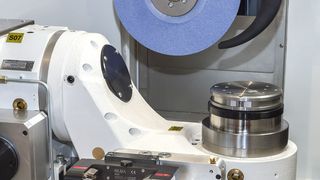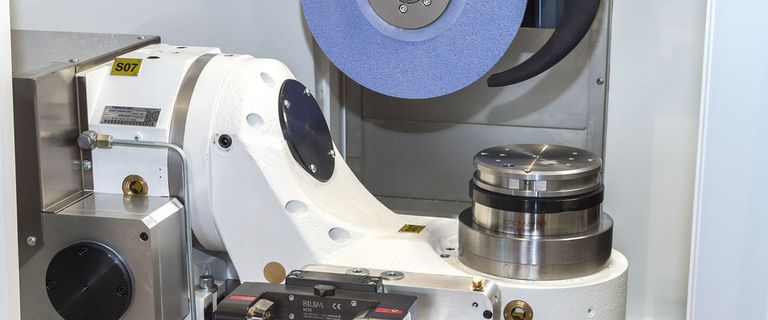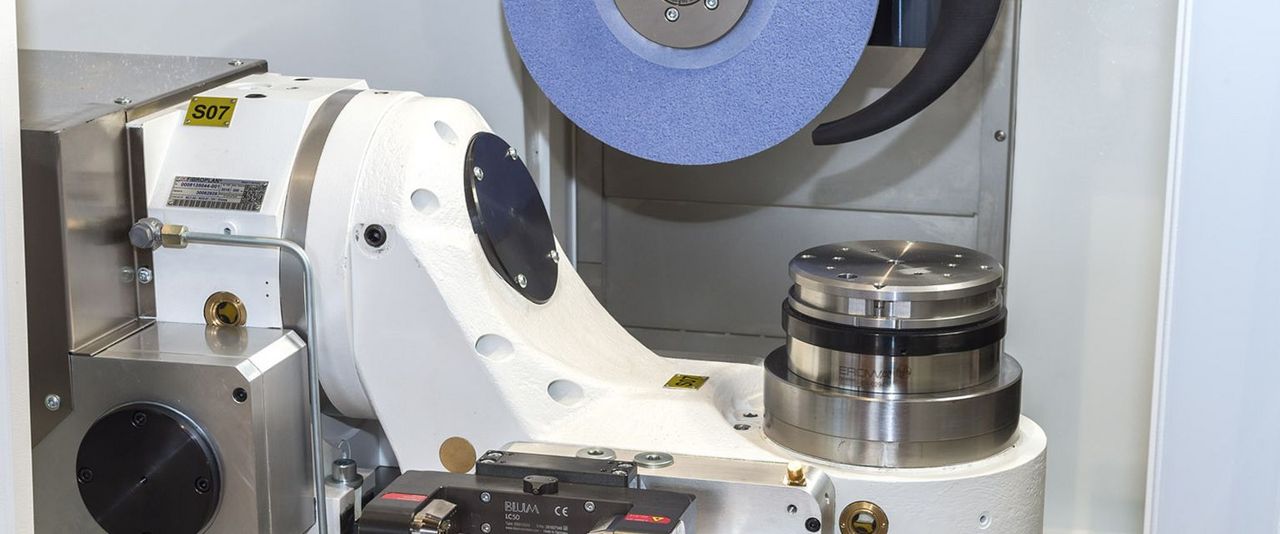For Deep Cuts, a Grinding Machine can be Better than a CNC Milling Machine
Processing time was once considered the most important factor for a CNC milling machine or CNC grinding machine. Today's applications look for improved quality and flexibility of machining as well. This is especially evident when deciding whether to use a CNC milling machine or a grinding machine for high cutting depths and higher material removal rates.
In the past, milling and turning were used to achieve higher material removal rates. For precise work such as finishing, grinding was considered the better solution. CNC milling machines were thus used in the manufacture of a variety of parts for the “roughing” operations, followed by a switch to the grinding machine for finer surfaces. Then the aerospace industry began introducing harder materials, minimizing the speed advantage of milling and turning. These materials have properties that help parts survive extreme environments – but make them difficult to machine. Up to just a few years ago, this led to problems with burrs and consistency in the quality of the parts. In addition, the tools had to be replaced frequently to handle the machining of hard materials.
Fortunately, machine technology and data collection have made large technological advances. Today, surface and profile grinding machines can mill, drill, grind and deburr parts in the same clamping. Engineers today analyze key variables to achieve process improvements, enhance product quality, and increase productivity.
Let’s look at how creep feed grinding and other innovations in grinding technology have created a more efficient approach to deep cuts compared to using a CNC milling machine.
Cycle Time for Creep Feed Grinding is 40 Percent Better
Machine manufacturers have adopted a “done-in-one” approach to their machine technology. They've added features to simplify machine programming, reduce the number of changes in the workflow, enable the combination of processes, and add value to each operation. Today, many grinding machines have built-in automatic wheel changers and dressing units that enable multiple grinding operations in one clamping.
The biggest advantage of creep feed grinding with continuous dressing? The lengthy process of milling, heat treating, deburring, and finishing is eliminated by combining these applications in one operation. In some cases, creep feed grinding is up to 40 percent faster than alternative processes in terms of cycle time, while at the same time providing improved surface quality. If you'll need to grind after turning or milling, why not simply use grinding from the start?
Grinding vs. Milling Advantages
Creep feed grinding is so promising due to its high material removal rate. This is becoming more and more important as many industries switch to harder materials for better quality parts. While conventional traverse grinding processes remove small amounts of material at feed rates of 5,000 mm/min, a single creep feed grinding pass removes between 50-500 mm/min at cutting depths of 0.25 to 35 mm or deeper.
With creep feed, a greater grinding depth and slower feed rate produce results in harder materials unattainable through milling. The deeper cut of the wheel means a high force, but the low feed rate brings greater efficiency and longer service life for the wheel.
To name just a few advantages of creep feed grinding:
- Milling shares many similarities with grinding. If workshop personnel are familiar with CNC milling machines, they will be familiar with grinding in no time.
- The low feed rate provides more control, enabling tighter tolerances and more complex geometric shapes, even in harder materials. The low feed rate also reduces scrap, which is important for expensive materials.
- Improved grains and bonds in grinding wheels provide more effective performance and a finer finish.
- Continuous dressing of the grinding wheels keeps the temperatures under control and the wheel sharp. This allows longer cuts, resulting in shorter cycle times and higher efficiency. Continuous dressing also means less machine wear and longer wheel life. The cost of tooling is only a fraction of the cost of tooling on a CNC milling machine.
New Grinding Wheel Materials Increase Efficiency
Creep feed grinding has been around for many years. However, advances in grinding wheel bonds and grain technology have taken grinding technology to new levels of material removal and productivity. Synthetic ceramic grains that remain sharper for longer, and higher porosity wheel bonds that hold the grains better, have driven these improvements:
- Intermittent dressing extends the life of the wheel and the efficiency of the drive.
- Longer machine life.
- The wheel can be used on less expensive CNC machines.
Switching Over From Milling to Grinding can Make Sense
By choosing the right grinding wheels and the right coolant, manufacturers can cut costs – as confirmed in a report from Norton. According to the report, abrasives account for only about 3 percent of a typical manufacturing budget, while machines, labor, and overheads account for 80 percent of that budget. Cost savings from a creep feed grinding operation could more than justify the expenditure.
Do you think that grinding may offer a better solution for high material removal rates than your CNC milling machine or turning machine? Let's sit down together and run through the numbers.









